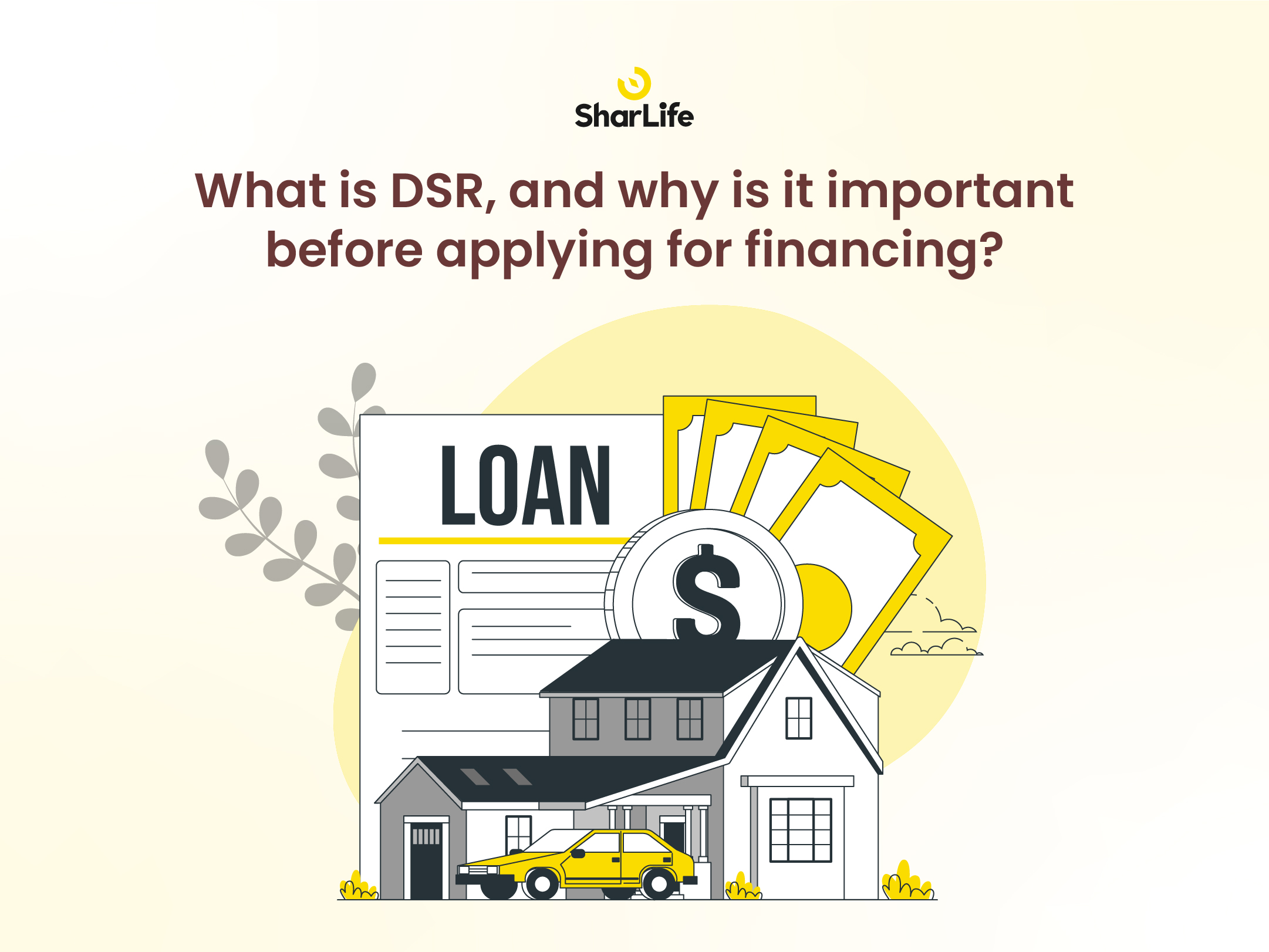Sharlife is a Registered Shariah Advisory Firm with Securities Commission Malaysia - The only regulated provider of crypto & stocks Shariah status

Ever wondered why your financing application gets rejected even when you earn enough?
Whether you are a fresh graduate starting your first job or a seasoned employee with a steady income, many of us plan to buy a house, own a new car, or apply for personal financing. In this process, one crucial concept you need to understand is the Debt Service Ratio (DSR). Understanding DSR is the first step — and one that should not be overlooked — as it is the first thing financial institutions such as banks assess. In reality, many financial applications are rejected not due to lack of income, but because the borrower's debt obligations exceed their financial capacity. DSR is not just a number — it is a key indicator of whether your financing will be approved.
The Debt Service Ratio (DSR) refers to the ratio between your total monthly debt obligations and your net monthly income. In simpler terms, it tells you how much of your income is used to repay debts every month.
DSR Formula:
Total monthly debt commitments ÷ Net monthly income × 100
Example:
If your net income is RM3,000 and your monthly debt commitments are RM1,200:
RM1,200 ÷ RM3,000 × 100 = 40 %
Banks use the DSR to evaluate your financial capacity. It helps them determine whether you can afford to take on a new financing without overburdening your monthly finances.
If your DSR is too high, it signals that a large portion of your income is already committed to existing debts. When applying for a new financing, this increases the risk of default — and banks may likely reject your application.
Example:
Let’s say your net monthly income is RM3,000, and you already have RM2,100 in monthly debt payments. That leaves you with only RM900 to cover all other expenses. This could lead to serious financial strain and negatively affect your mental and physical well-being.
In Malaysia, Bank Negara Malaysia (BNM) sets the maximum Debt Service Ratio (DSR) limit at 70% for individual borrowers. However, each financial institution may implement its own internal DSR limit to minimise the risk of defaults.
Typically, DSR health levels used by banks are as follows:
DSR below 60% – Considered healthy and likely to be approved.
DSR between 60% and 70% – Considered risky. Approval depends on additional factors like stable income, CCRIS credit history, and existing financing amounts.
DSR above 70% – Likely to be rejected unless there are mitigating factors such as a guarantor, high income, or pledged collateral.
Calculating your DSR in advance gives you a strategic advantage as a borrower. Key benefits include:
Avoid Rejected Applications – Know your eligibility upfront before applying.
Manage Financial Strategy – Reduce existing debt before applying for larger financing.
Plan an Appropriate Financing Amount – Avoid overborrowing beyond your capacity.
Increase Bank Confidence – A healthy DSR builds lender trust in your repayment ability.
Curious about your exact DSR? Get instant, intelligent insights.
Introducing the Smart DSR Calculator, powered by AI — more than just a calculator. It:
✅ Accurately calculates your DSR in real-time
✅ Analyzes your financing eligibility automatically
✅ Recommends actionable steps to improve your DSR
✅ Suggests the ideal financing amount based on your financial profile
✅ Aligns with the latest banking standards for accuracy and relevance
Make smarter financial decisions — try it now.
👉 Use the Smart DSR Calculator Now
Take control of your finances.
Calculate first, apply later – smarter, safer decisions.